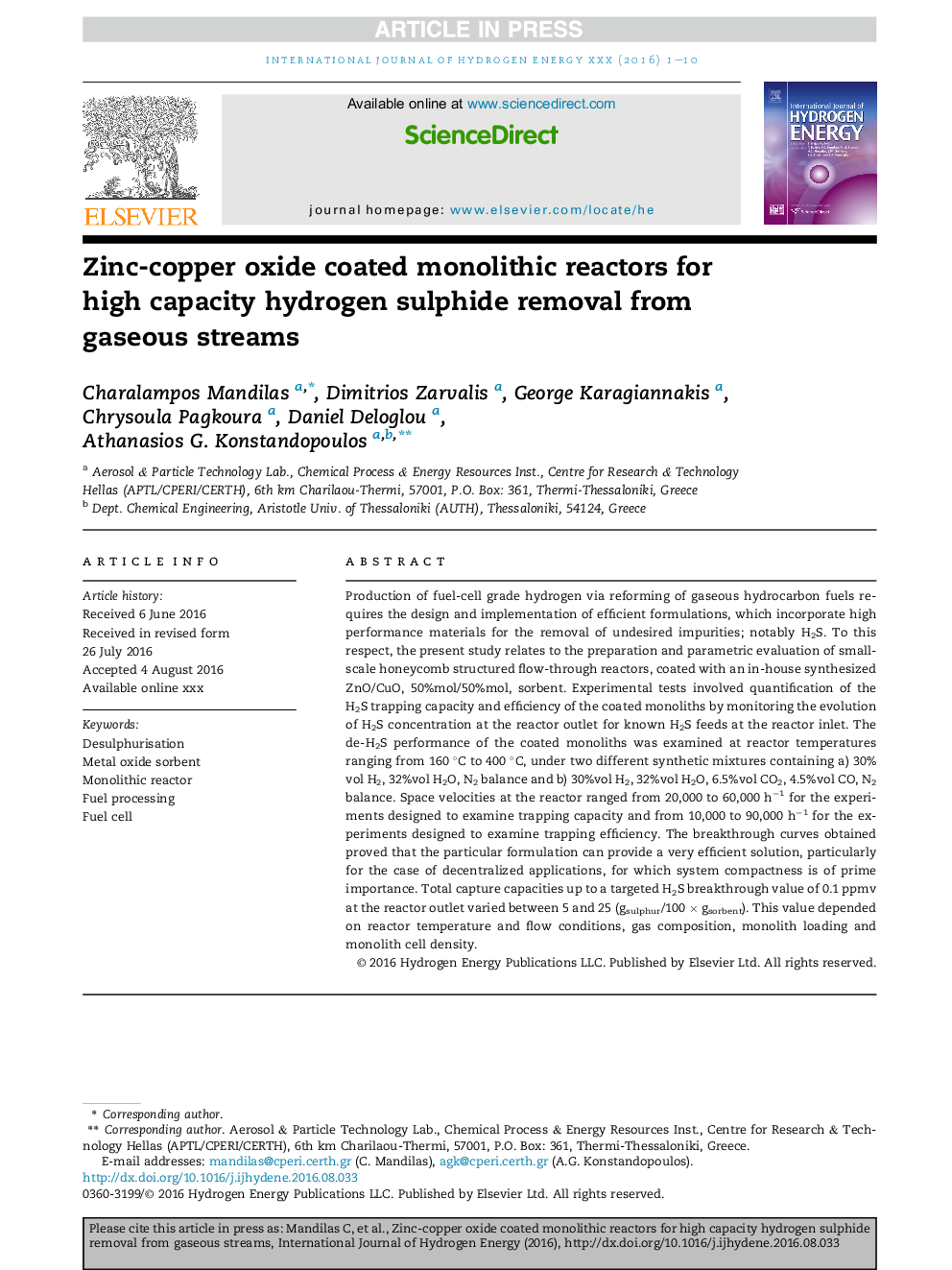| Article ID | Journal | Published Year | Pages | File Type |
|---|---|---|---|---|
| 5146873 | International Journal of Hydrogen Energy | 2016 | 10 Pages |
Abstract
Production of fuel-cell grade hydrogen via reforming of gaseous hydrocarbon fuels requires the design and implementation of efficient formulations, which incorporate high performance materials for the removal of undesired impurities; notably H2S. To this respect, the present study relates to the preparation and parametric evaluation of small-scale honeycomb structured flow-through reactors, coated with an in-house synthesized ZnO/CuO, 50%mol/50%mol, sorbent. Experimental tests involved quantification of the H2S trapping capacity and efficiency of the coated monoliths by monitoring the evolution of H2S concentration at the reactor outlet for known H2S feeds at the reactor inlet. The de-H2S performance of the coated monoliths was examined at reactor temperatures ranging from 160 °C to 400 °C, under two different synthetic mixtures containing a) 30%vol H2, 32%vol H2O, N2 balance and b) 30%vol H2, 32%vol H2O, 6.5%vol CO2, 4.5%vol CO, N2 balance. Space velocities at the reactor ranged from 20,000 to 60,000 hâ1 for the experiments designed to examine trapping capacity and from 10,000 to 90,000 hâ1 for the experiments designed to examine trapping efficiency. The breakthrough curves obtained proved that the particular formulation can provide a very efficient solution, particularly for the case of decentralized applications, for which system compactness is of prime importance. Total capture capacities up to a targeted H2S breakthrough value of 0.1 ppmv at the reactor outlet varied between 5 and 25 (gsulphur/100 Ã gsorbent). This value depended on reactor temperature and flow conditions, gas composition, monolith loading and monolith cell density.
Related Topics
Physical Sciences and Engineering
Chemistry
Electrochemistry
Authors
Charalampos Mandilas, Dimitrios Zarvalis, George Karagiannakis, Chrysoula Pagkoura, Daniel Deloglou, Athanasios G. Konstandopoulos,
